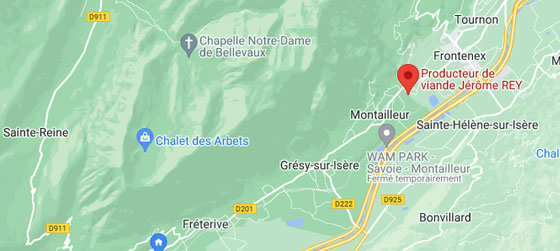Building upon the foundational insights from Mythology and Currency: Lessons from Ancient Greece and Modern Games, this article explores how mythic stories continue to influence the narratives that shape our economy today. From ancient symbols of wealth to modern branding strategies, myth continues to serve as a powerful tool for framing economic realities and aspirations.
1. Introduction: Connecting Mythology, Economy, and Modern Narratives
Ancient myths have historically provided the symbols and narratives that underpin economic practices. For example, the myth of Plutus, the Greek god of wealth, personified abundance and prosperity, influencing perceptions of wealth in Western culture. These stories established early notions of value, resource management, and economic legitimacy, which persisted through centuries.
Today, mythology continues to inform economic storytelling, shaping how societies conceptualize growth, risk, and stability. Modern branding, financial narratives, and national economic identities often draw on mythic archetypes, transforming ancient stories into contemporary symbols of trust and aspiration.
2. The Archetype of the Hero in Economic Branding
Modern corporations frequently adopt the hero archetype to craft compelling brand identities. Companies like Nike, with its association with the mythic figure of Heracles, evoke strength, perseverance, and victory. Similarly, superhero-inspired branding, such as Marvel’s financial ventures, taps into heroic narratives to foster loyalty and confidence among consumers.
Research indicates that consumers respond positively to brands that mirror mythic hero stories, perceiving them as trustworthy and inspiring. This psychological connection enhances economic confidence and encourages brand loyalty, which is vital in competitive markets.
Case Studies
- Nike’s branding as an emblem of perseverance echoes the hero’s journey, fostering a narrative of overcoming challenges.
- Tesla’s positioning as an innovator mirrors mythic figures of transformative change, inspiring consumer trust in technological progress.
3. Mythic Narratives and Financial Crises: Morality Tales and Cautionary Stories
Financial scandals often mirror mythic themes of hubris, punishment, and redemption. The rise and fall of Lehman Brothers, for instance, can be viewed through the lens of hubris, reminiscent of Greek tragedies where excessive pride leads to downfall.
Storytelling during economic downturns frequently invokes morality tales—warnings against greed or shortsightedness—shaping public perception and policy responses. For example, the narrative of punishment for reckless behavior fosters calls for increased regulation and oversight.
Such mythic framing influences recovery narratives, emphasizing themes of redemption and renewal, which are crucial for restoring public trust and economic stability.
4. Divine Intervention and Market Sentiments: The Role of Mythic Deities in Economic Decision-Making
Investors often attribute market fluctuations to fate or luck, reflecting mythic ideas of divine influence. For example, the concept of “market gods” in financial circles symbolizes the unpredictable nature of markets, akin to gods controlling human destiny.
Cultural myths influence investor behavior; in some societies, invoking deities or spiritual luck in trading is believed to sway outcomes. This parallels ancient rituals performed to appease gods and seek favorable results.
Modern equivalents include the reliance on algorithms or “black box” trading, where chance and luck play significant roles, echoing mythic notions of divine intervention in human affairs.
5. Mythology as a Tool for Economic Ideology and Policy Construction
Nations frequently invoke mythic stories to justify economic reforms or systems. The myth of Atlantis, representing an idealized utopia of abundance, has historically been used to promote visions of economic prosperity and progress.
In propaganda, mythic symbolism reinforces national identities—e.g., the myth of Rome as a symbol of imperial strength—serving to legitimize policies and economic strategies.
However, critics argue that myth-driven narratives can distort economic realities, leading to policies rooted more in aspiration than pragmatic analysis.
6. The Myth of Prosperity and Scarcity in Contemporary Economics
Contemporary economic myths often depict societies as either abundant or scarce, echoing tales from mythic traditions. The narrative of wealth as abundance promotes consumerism and technological advancement, while stories of famine or resource depletion serve as warnings.
These myths influence policy debates on sustainable development, resource management, and inequality. For instance, the myth of endless growth has been challenged by ecological concerns, prompting shifts toward resilience and sustainability.
Leveraging mythic storytelling can either motivate sustainable practices or entrench harmful excess, depending on how narratives are framed.
| Mythic Vision | Modern Economic Concept | Implication |
|---|---|---|
| Abundance (Golden Age) | Wealth, prosperity | Encourages growth-oriented policies |
| Scarcity (Famine, Decline) | Resource depletion, crises | Prompts sustainability and conservation efforts |
7. Deepening the Narrative: The Role of Mythology in Shaping Global Economic Consciousness
Cross-cultural mythic motifs influence international economic collaborations. For example, the Chinese dragon symbolizes strength and good fortune, shaping economic partnerships within Asia and beyond.
Global financial institutions often adopt mythic themes in branding. The World Bank’s emblem, with its depiction of a branching tree, echoes mythic themes of growth and interconnectedness, reinforcing a shared narrative of development.
Shared mythic narratives foster a sense of interconnectedness, promoting cooperation but also risking cultural homogenization if not critically managed.
8. Returning to the Parent Theme: Mythology, Currency, and the Power of Collective Stories
As explored in parent article, mythic structures underpin both ancient and modern symbols of value. Currencies themselves often carry mythic symbolism—think of the drachma, rooted in Greek myth, or the dollar, associated with notions of power and stability.
Storytelling remains essential in shaping economic values and practices. Narratives of prosperity, stability, and innovation serve to legitimize policies and inspire collective action.
Looking forward, leveraging mythic narratives thoughtfully can foster a more resilient and inclusive economic future—one that recognizes the power of shared stories to unite communities and inspire sustainable growth.
« Mythic stories are not just relics of the past—they are living frameworks that continue to shape our economic reality. »

